
But there are some factors that, in many cases, you can control. One of those is functional obsolescence. If you’ve never heard of this before, we’re here to explain exactly what functional obsolescence is in real estate, how it can impact your home’s value, and what you can do about it.
What is Functional Obsolescence?
Functional obsolescence happens when an object’s usefulness decreases when the design is considered to be old or outdated.
In most situations, the obsolescence occurs because a newer model has been brought to market, making the older version less useful. The tech industry is a good example of this. Smartphones, for instance, lose value when a new model comes out. That’s why their purchase price drops, while the new model fills the gap of the older one at the higher price point.
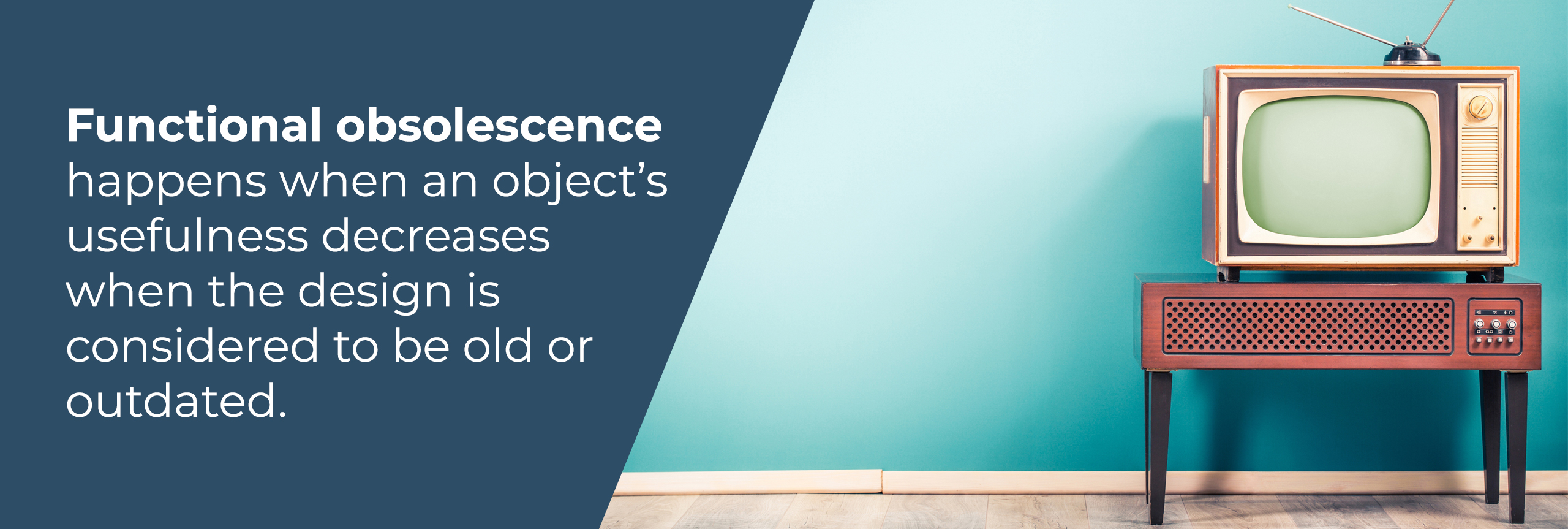
What is Functional Obsolescence in Real Estate?
While there are many different industries that have functional obsolescence, in real estate this happens when the desirability of a property decreases due to its design or an outdated feature.
Some depreciation may happen due to outside factors. But this type of price drop is often something larger on the home specifically that can be difficult to fix. For example, a 4 or 5 bedroom home with only one bathroom would now be considered functionally obsolete. When other homes with that number of bedrooms usually have at least 2 or 3 bathrooms, the original home can no longer compete at the same price level.
Types of Functional Obsolescence
Functional obsolescence can come in three different forms:
- Curable functional obsolescence – the issues can be fixed by the property owner e.g. replacing the roof or siding to improve both look and function of the property.
- Incurable functional obsolescence – the problems are too costly or are not practically to correct e.g. adding another bedroom, bathroom, or garage.
- Superadequacy – an addition or fix overcorrects and costs more to add than the value it brings to the property e.g. a $20,000 swimming pool may only add $8,000 in value to a home’s sale price.
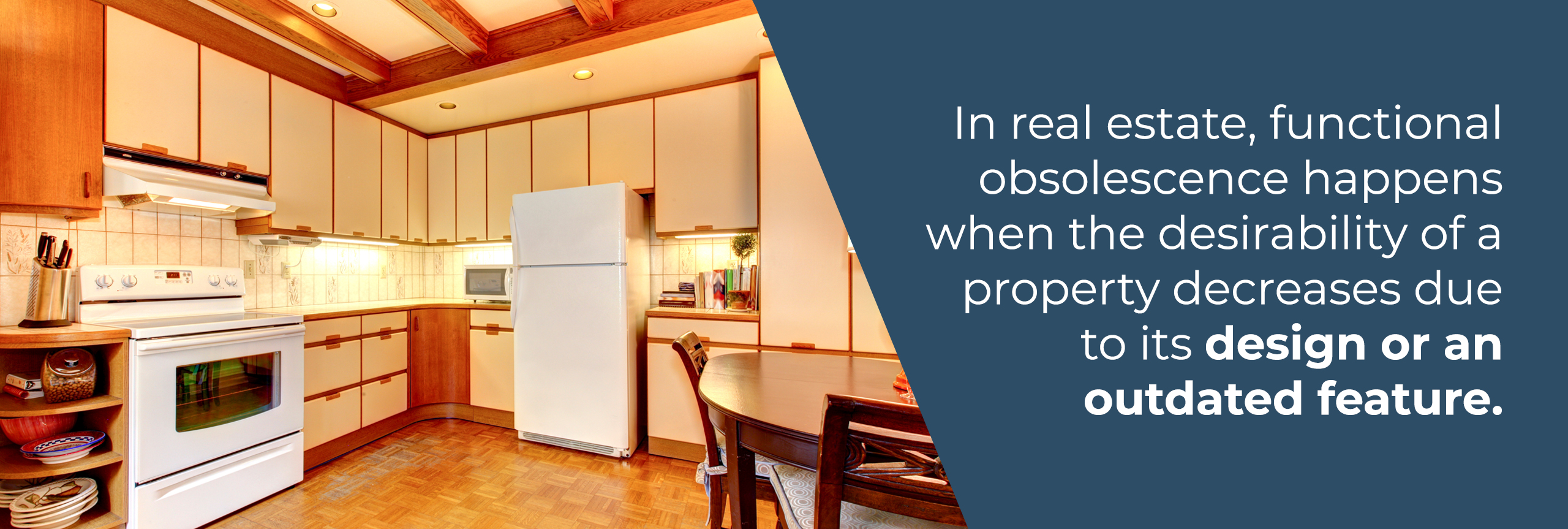
Functional Obsolescence vs. Economic Obsolescence
There is a difference between controllable factors that influence a property’s value and those that, despite your best efforts, can’t be accounted for. These are considered under the umbrella of economic obsolescence.
Like functional obsolescence, economic obsolescence means that the functionality, desirability, or worth of a property decreases. A busy road added near the home, a change in overhead flight pathways, a rise in criminal activity, and even environmental issues like flooding or wildfires can all decrease the value of a home.
Where functional obsolescence can, in some circumstances, be cured, economic obsolescence cannot. Homeowners have no control over what happens on the land around their home and when a local authority spends millions of dollars making infrastructure changes, they aren’t going to backtrack simply because a few homes have decreased in value.
What Are Examples of Functional Obsolescence in Homes?
Functional obsolescence can appear in many forms on a property. The most common is physical deterioration. This could be a problem with either the interior or exterior of the home and can range from a room needing a new coat of paint all the way up to completely renovating a kitchen or bathroom.
While most buyers can overlook cosmetic issues, larger fixes like a new kitchen or bathroom can be off-putting, particularly if the design is dated. Physical deterioration of a home becomes more apparent if other houses in the neighborhood have kept up-to-date with their maintenance. In many cases, this kind of functional obsolescence can be fixed by a seller before the home is put on the market.
Home layout issues are another problem entirely. In some cases, these can be solved. For example, an adjoining wall could be removed to create a more open-plan format or a large closet converted into an en-suite bathroom. But if a home’s layout doesn’t fit with the rest of the neighborhood, this can be a problem.
Having too few bathrooms for the number of bedrooms is one of the biggest issues that sellers of older homes run into. Along with this, too many rooms for the square footage can cause issues. These days, many buyers are looking for spacious living areas, so a handful of small individual rooms can be a big problem for them.
Economic obsolescence factors like busy roads or nearby manufacturing works can all impact the value of a property. In general, a home that looks out of place in a neighborhood will often struggle to sell. For instance, a small 2 bedroom home in the middle of a community of larger homes will be unlikely to reach anywhere close to the value of these other properties.
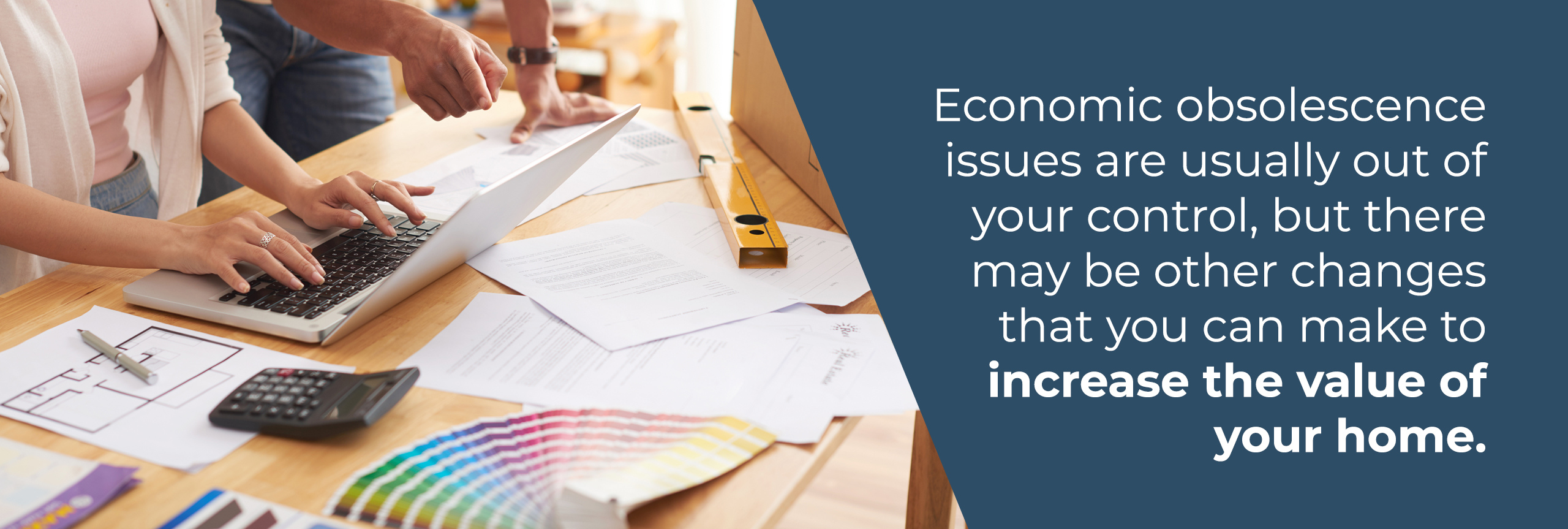
How Does Functional Obsolescence Affect Selling a Home?
No matter what the reason, functional obsolescence will typically result in a decreased property value. Curable obsolescence, though, will generally have a smaller impact than incurable obsolescence. If you’re not planning to make the necessary updates yourself, you’ll need to be willing to negotiate on the home purchase price if you want to attract a buyer.
If you’re concerned about superadequacy being a problem, you need to carefully consider the value of the addition before moving ahead. In some cases, you may not recoup those costs in the sale price. Working with an appraiser can be helpful here. They can provide guidance on any changes you’re considering and can value the home based on what it would cost to tear down and rebuild, or the replacement cost.
Having too few bathrooms for the number of bedrooms is one of the biggest issues that sellers of older homes run into. Along with this, too many rooms for the square footage can cause issues. These days, many buyers are looking for spacious living areas, so a handful of small individual rooms can be a big problem for them.
Economic obsolescence factors like busy roads or nearby manufacturing works can all impact the value of a property. In general, a home that looks out of place in a neighborhood will often struggle to sell. For instance, a small 2 bedroom home in the middle of a community of larger homes will be unlikely to reach anywhere close to the value of these other properties.
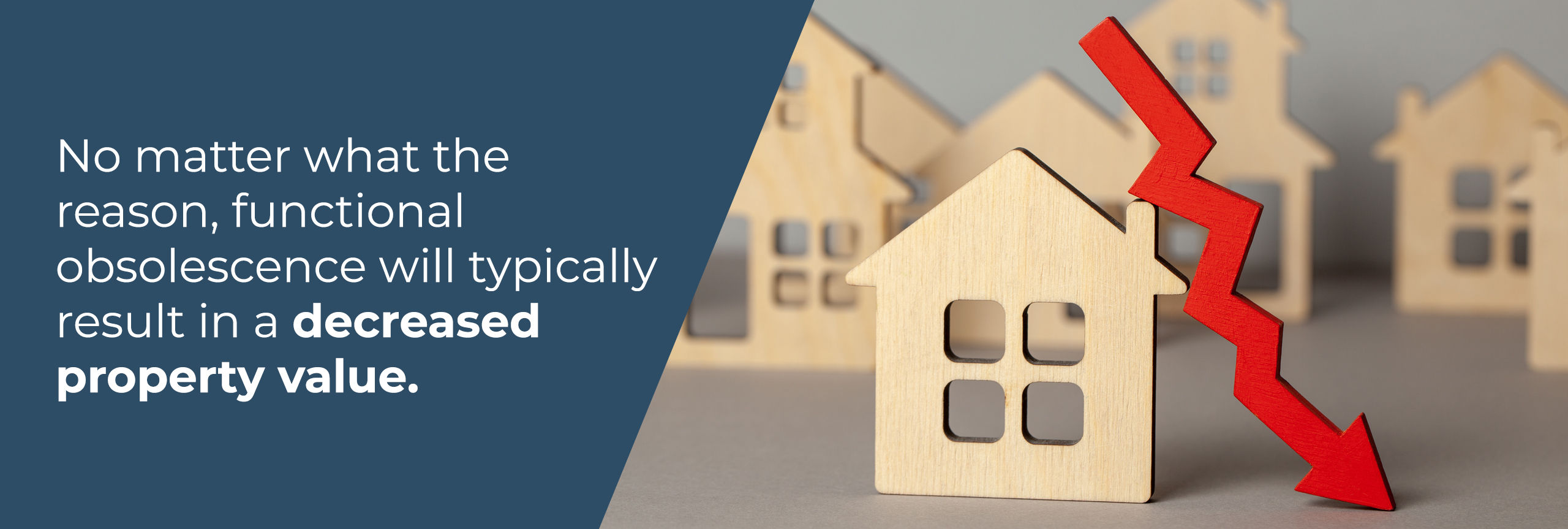
Avoiding Functional Obsolescence
Economic obsolescence issues are usually out of your control, but there may be other changes that you can make to increase the value of your home.
For house-flippers or investors, it’s important not to go overboard with your design or decor. This is one of the biggest areas where superadequacy can occur. Think about where your investment is most valuable by comparing your property to others in the neighborhood.
For sellers who are in need of more space, it may be better to look at selling your current home and moving into something larger, rather than adding an extension. If your home is in a neighborhood of single story units of roughly the same square footage, an addition could actually backfire when it comes to selling the property.
If your home currently lacks something that the rest of the neighborhood has, though, you should think about making some changes. Any necessary repairs on the home should be made before you list it for sale, or be prepared for buyers to negotiate the price down quite significantly. Costly renovations or upgrades can increase a home’s value, but it’s helpful to work with an appraiser first to decide on the scale and cost benefit that you might see by moving ahead with this.
Having too few bathrooms for the number of bedrooms is one of the biggest issues that sellers of older homes run into. Along with this, too many rooms for the square footage can cause issues. These days, many buyers are looking for spacious living areas, so a handful of small individual rooms can be a big problem for them.
Economic obsolescence factors like busy roads or nearby manufacturing works can all impact the value of a property. In general, a home that looks out of place in a neighborhood will often struggle to sell. For instance, a small 2 bedroom home in the middle of a community of larger homes will be unlikely to reach anywhere close to the value of these other properties.
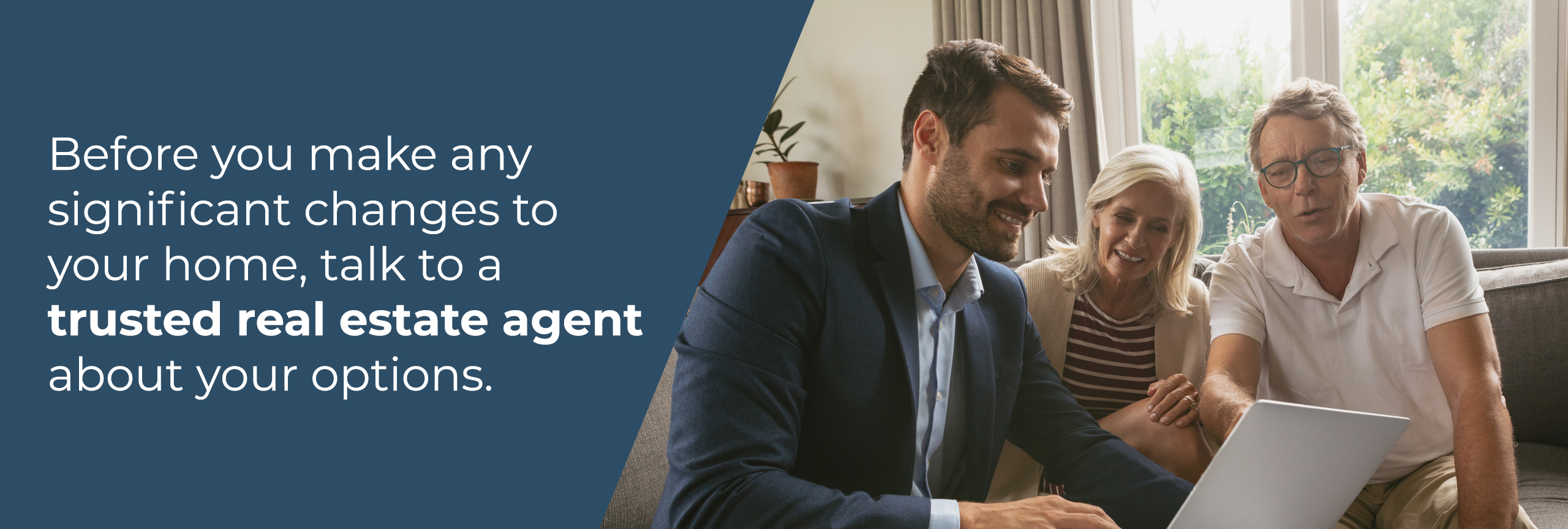
Plan Ahead With A Real Estate Agent
Before you make any significant changes to your home, talk to a trusted real estate agent about your options. The team at Showcase Properties in both Ocala, Marion County and Gainesville, Alachua County will work with you to answer your questions and help you to decide on the best solution for your situation. Contact a realtor to get started and check out these tips for selling your home.
